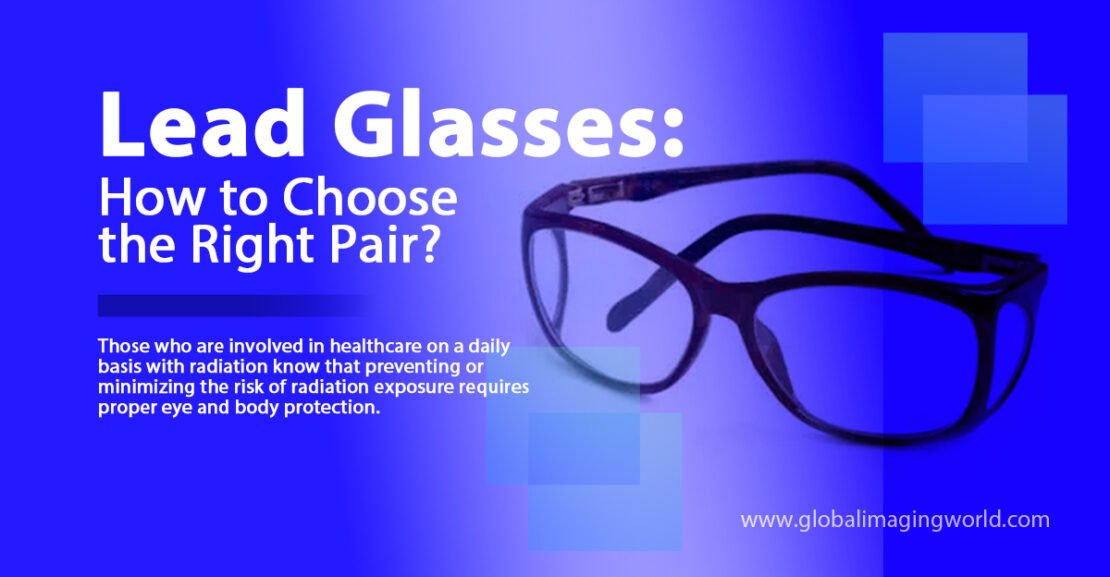Radiation can harm your eyes, so protecting them is extremely important. Both radiation protection lead Goggles and lead aprons should be worn at the time of working in an x-ray environment.
It is often the case that medical organizations and hospitals fail to provide their medical staff with lead glasses despite evidence that radiation from unprotected exposure can cause serious harm. Generally, a lead apron is typically provided at hospitals to protect the body from radiation exposure. Radiation protective clothing does not usually include lead glasses. There are many instances in which members of the medical staff don’t wear x-ray lead goggles (because they are neither provided nor can they buy them independently out of their own pocket).

But do you know, to ensure the best protection to your eyes from harmful radiation exposure, what type of radiation protection eyewear do you have to choose? Through this article, we will discuss how you have to choose the best radiation protection eye ware that will not only protect your eyes from harmful radiation but also make you comfortable and perfectly fit over the eyes.
Those who are involved in healthcare on a daily basis with radiation know that preventing or minimizing the risk of radiation exposure requires proper eye and body protection.
The following points should help you choose the best Lead Goggles for radiation protection:
- Identify Your Radiation Protection Needs:
You will need to identify the type of radiation safety glasses you need based on the radiation exposure you are being exposed to. If you are concerned that you have been exposed to radiation, you should speak with your supervisor or a radiation safety expert like a Medical Physicist or Radiation Safety Officer.
- Radiation Protection Levels:
2.1 Lead Equivalence:
Basically, the lead equivalency is the measurement of the lead lens thickness. Lead equivalency is the main component we should check while buying x ray protection glasses. This value is used for shielding purposes, such as controlling windows, protective clothing, etc. Gamma Ray. Higher the equivalence value better the protection. We should be aware of the required lead equivalency of our radiation exposure so that we can choose the right pair of lead glasses to ensure the best comfort and protection.
It is strongly recommended to use the x-ray radiation protection lead goggles for the effective protection of the eye lens of the professionals working in the radiological environment. The leas goggles having Lead equivalency of 0.5 mm Pb with side shielding ensures the requisite protection from harmful medical radiation exposure.
2.2 Side Shielding:
Choose x-ray lead glasses that provide wraparound protection by covering the sides of the eyes. The recommended LE for leaded side shields is 0.50mm Pb.
2.3 Frame Type:
Different levels of protection are provided by different kinds of lead glasses. On the basis of structure, we can categorize the frame of eyewear into the following 3 categories.
- Wraparound Frame:
Wrap-around type of Lead Goggles ensures complete protection and the best comfortability to operators because they cover the front as well as the sides of the head and perfectly fit over the eyes. Due to their wrap-around model, they are primarily advised to the radiologists who work in an environment where radiation comes from multiple directions.
- Semi-wraparound Frame:
A semi-wraparound frame provides some side protection as well as front protection (‘semi-wraparound’). The addition of leaded side shields is usually recommended for extra lateral protection.
- Flat Lead Glasses:
Many prescription types and scripts can be accommodated by this frame. Their protection is limited to the front, however. To give your eyes wraparound protection, choose flat leaded glasses to frame with side shields that can be attached to the frame to offer leaded side shields.
- Comfort-related factors:
3.1 Weight:
You may find it more comfortable to wear a pair of lead glasses that are extremely lightweight, especially if you are performing long diagnostic imaging procedures, such as those performed in catheter laboratories. Eyewear that protects against radiation is typically heavier than safety eyewear. Lead is the heavy component in the lens. Your lead glasses will be heavier if you have bigger leaded lenses. There is a range in weight between 55g and 100g for lead glasses.
3.2 Size:
The size of some frames varies. If you are shopping for lead glasses, be sure to pay attention to the frame size, and be sure to choose one that fits you comfortably without slipping off.
